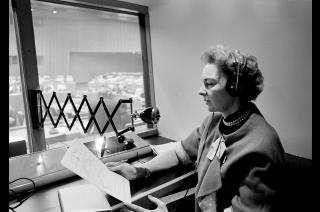What is a mother language?
Your ‘mother language’, or ‘mother tongue’, is the language you spoke from earliest childhood. For most people, this is just one language but children in multilingual families may learn two simultaneously. UNESCO considers mother languages to be an essential part of culture and identity, and carriers of values and knowledge. They are vital to the preservation and transmission of traditions, expressions, songs, jokes and rituals, which make all our lives richer.
UNESCO recommends that countries that have a bilingual or multilingual education system (where they use one or more official languages) give its school students the opportunity to use their mother tongue as their language of instruction. Research shows that particularly in early years education, use of a child’s mother tongue helps to create a strong foundation for learning. However, in some countries, a particular language might be preferred for political or cultural reasons. This can result in the domination of one language in education and other public services. People that don’t speak the dominant language or speak it poorly can thus be disadvantaged and in the worst cases, it can lead to discrimination in daily life, exclusion from jobs or services and even oppression. It can also result in other languages becoming endangered and ultimately extinct.
-
Just like endangered animal species, some languages are rapidly dying out and shared commitment and interest is needed help keep them alive. At one time, there were between 7,000 and 8,000 distinct languages worldwide.
-
Over the past three centuries, languages have died out and disappeared at a dramatic and steadily increasing pace, especially in the Americas and Australia. Now, very few people speak most of the 6,000 known languages around the world.
-
About half of the 6,000 or so languages spoken in the world are under threat.
Why are some languages in danger of disappearing?
Out of about 6000 languages in the world, more than 200 have the status of national languages and a few hundred more have established literacy – meaning sufficient people use them on a regular basis. Still, every language reflects a unique world-view with its own value systems, philosophy and particular cultural features. When a language is lost, it is not only the words and their meaning that disappear. It also involves a loss of unique cultural knowledge embodied in the language for centuries, including historical, spiritual and ecological knowledge.
A language disappears when its speakers disappears or when its speakers shift to speaking another language. This can happen for external reasons, for example, when a government pursues a policy of just one dominant language. But, it can also happen for internal reasons, for example, when a community has a negative attitude to its own language and does not maintain it and protect it.
In order to protect human rights, one of the UN’s key objectives, people must be able to understand their rights. The UN’s Universal Declaration of Human Rights holds the world record as the most translated document - 360 language versions are available to help people learn about their rights.
Globalisation, migration, urbanisation and the spread of new technology are factors that can have adverse impact on language diversity, particularly when traditional ways of life are put under pressure. But they can also help to protect and spread languages.
About 90 percent of the current content on the Internet is only available in 12 languages. However, the digital tools are also helping to preserve languages that otherwise would have been lost to obscurity. Researchers at the Jawaharlal Nehru University in India, for example, have made extensive recordings of Boa Sr., the last surviving speaker of the Bo language of the Andaman Islands in the Indian Ocean. Although she died in 2005, there is now a rich digital archive of materials, making the language and the cultural, historical and ecological knowledge that it relayed available to future generations.
UNESCO – helping to protect endangered languages
As part of its work to promote mother language and protect linguistic and cultural diversity, UNESCO has created an Atlas of World’s Languages in Danger. Available both in print and online, the Atlas raises awareness of endangered languages and the need to safeguard the world’s linguistic diversity among governments, speaker communities and the general public, The Atlas is also used to monitor the status of the different languages that are in danger and to show global trends in linguistic diversity. The latest edition from 2010 lists about 2,500 languages, of which 230 have been extinct since 1950. The online version is interactive, allowing users to provide feedback and suggest endangered languages to be included. Engaging with users in this way enables UNESCO to regularly update and improve the Atlas.
UNESCO uses a scale which outlines the degree of endangerment when classifying the languages included in the Atlas.

